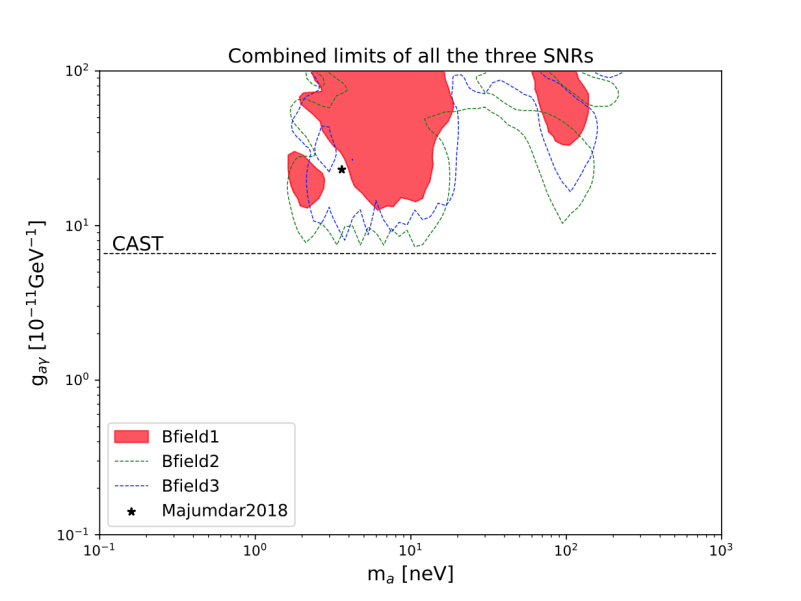Axionlike particles (ALPs), one kind of attractive cold DM candidates, share the same intriguing property with axions that these particles and photons can convert into each other in electromagnetic fields through the Primakoff process. The conversion between gamma-ray photons and ALPs in external magnetic fields could create energy-dependent modulations in spectra of gamma-ray sources, which is the so-called photon-ALP oscillation. Such a spectral oscillation effect could be a smoking-gun signature for the existence of ALPs. We combine the Fermi-LAT data with the Imaging atmospheric Cherenkov telescopes (IACTs:MAGIC/VERITAS/H.E.S.S.) measured spectra of three supernova remnants (SNRs: IC443, W51C, and W49B) to search for the possible imprint of the photon-ALP conversion and constraint on ALP parameters. 
Fig. 1: The 95% confidence level limits on ALPs parameters by combining all three SNRs. The red region is obtained from Galactic magnetic field (GMF) model Bfield1. The dashed lines are for two additional GMF models Bfield2 (green) and Bfield3 (blue), respectively.
For the joint analysis, we do not find any reliable signal for the photon-ALP oscillation, which is different from our previous work only using the Fermi-LAT spectrum of IC443. The difference likely arises from the use of the latest version of the Fermi-LAT data (P8R3), the updated diffuse emission templates and the new version of the source catalog (4FGL). Then we set constraints on ALP parameters based on the combined analysis of all three sources. Compared with the CAST limits, the combined limits of all three SNRs (in Fig. 1) does not give tighter constraints, which however could be regarded as a supplement and complement to the previous limits. See more details in: https://journals.aps.org/prd/abstract/10.1103/PhysRevD.100.123004 By Ziqing Xia |
